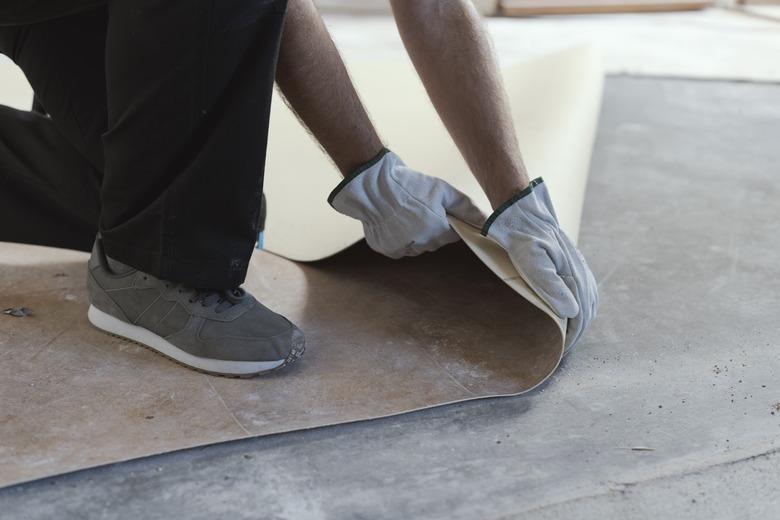How To Remove Glue Residue On A Linoleum Floor
Glue residue on your linoleum floor creates a sticky situation and one that leaves your floor looking messy. Dealing with spilled adhesive right away is usually easiest, but you can still remove hardened glue with the right techniques. The cleaning process often depends on the type of adhesive, with some being easier than others to remove. You may be able to soften it with heat or a solvent or harden it with ice to make it easier to chip before scrapping to remove glue from linoleum floor surfaces.
Dissolve Glue With Solvents
Some adhesives, such as tile mastic and wood glue, are water-soluble and will soften if you keep them wet long enough. An easy way to do this is to soak a towel in water, lay it on the glue-covered area and keep it wet by spraying it with water periodically. Eventually, the glue may become soft enough to scrape away, using a plastic paint scraper that won't scratch the linoleum.
If water doesn't work, try mineral spirits or paint thinner; neither will damage linoleum but may help soften the glue enough to scrape it off. You may have to resort to lacquer thinner or acetone on linoleum for some types of glue, and these require more respect. Dab the solvent on the glue, not on the surrounding flooring, using a cotton swab. Remove any spilled acetone on vinyl floor surfaces immediately to prevent damage.
Always ensure ventilation whenever you use chemicals in your home. Follow the product instructions exactly, and avoid mixing chemicals that could cause a reaction. Use protective gear to avoid contact or inhalation of any harsh chemical solvents.
Melt Glue With Heat
Some adhesives, notably contact cement, are heat-sensitive. That means you can soften them with a hair dryer on medium to high heat. It's important to avoid overheating. That will also soften the linoleum, which can cause the adhesive to amalgamate with the hardened linseed oil on the surface of the flooring.
Monitor the consistency of the glue while you're heating it to avoid overheating. Remove the heat and scrape the glue as soon as it becomes soft. It's safer to scrape with a plastic scraper, but you can use a metal scraper if you keep the angle of the handle low with respect to the floor and avoid downward pressure on the blade.
Harden Glue With Ice
Some types of glue, such as construction adhesive and polyurethane glue, don't respond well to heat or solvents but become brittle when exposed to ice or dry ice. Keep the ice in a plastic bag to prevent a messy situation. Place the bag on top of the glue and leave it there for 5 to 10 minutes.
When you remove the bag, chip the glue off the floor carefully using a plastic putty knife and a hammer. Work the knife blade under the glue and give it a sharp tap. You may prefer a metal blade, but it can potentially damage the floor, so use it with caution.
Glue on Vinyl Floors
Not all floors that look like linoleum are actually linoleum. Many are vinyl, and if that's the case, you should be more careful about using solvents. Avoid lacquer thinner or acetone, which both melt vinyl.
It's safe to use ice and heat, but avoid scraping or tapping the glue with a metal blade. It may crack the surface or remove part of the pattern, which is imprinted on the surface. If the glue has hardened, you may have some success scraping it off with a pull scraper. Use light pressure on the tool and don't allow the blade to come in contact with the flooring.
